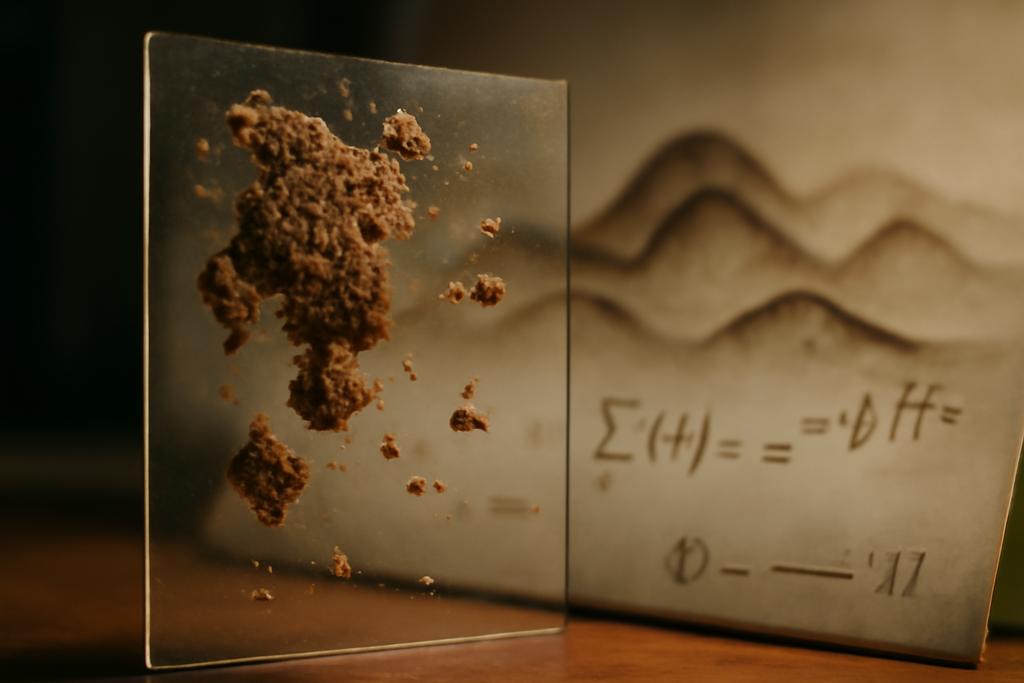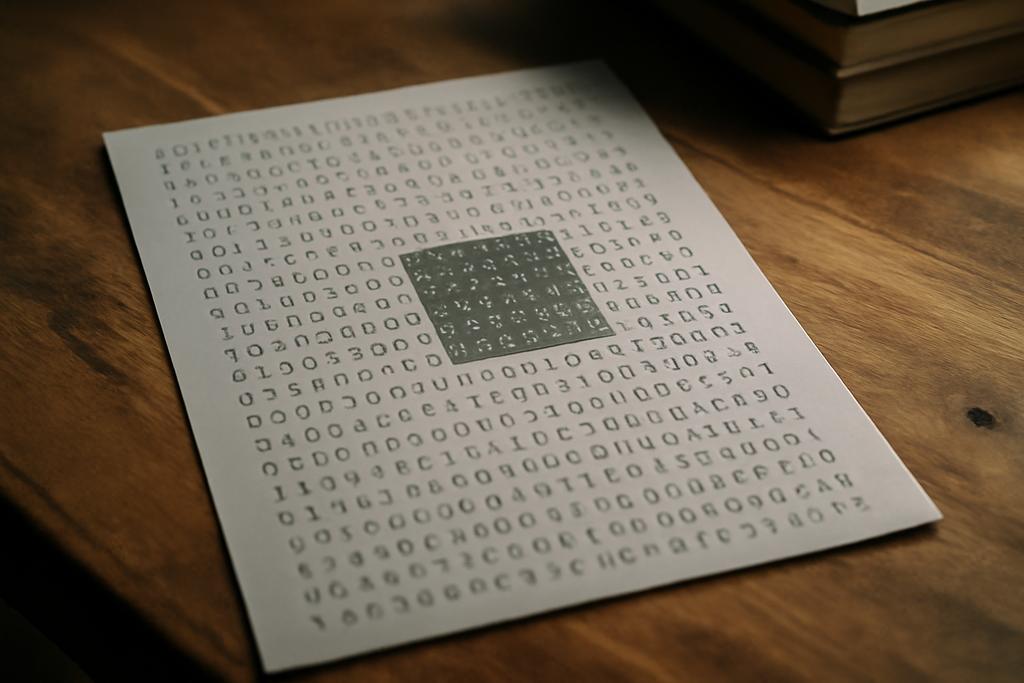The Large Hadron Collider is a machine built for big questions and tiny clues. The Standard Model has steered physics for decades, but as scientists push its boundaries, they keep returning to the same stubborn mystery: what lies beyond the known particles and forces? A new analysis from the ATLAS Collaboration at CERN takes a fresh swing at that question, not by chasing a shiny new particle in a single, dramatic burst, but by mining the data for subtle hints in a very particular kind of signature. The signature in this case is tau leptons, the heavier cousins of electrons, showing up in events with jets and missing transverse momentum. If nature folds in a supersymmetric extension of the Standard Model, those tau-rich events could be the telltale footprints of new particles like gluinos and squarks in their decay cascades. The study takes advantage of data collected at two energies, 13 TeV and 13.6 TeV, spanning Run 2 and Run 3 of the LHC, and it uses two parallel analysis tracks — a machine-learning route and a traditional cut-and-count approach — to maximize sensitivity across a wide swath of possibilities.
This work was produced by the ATLAS Collaboration, a global team operating at CERN with contributions from universities and national labs around the world. In the language of big collaborations, the lead authorship sits with the ATLAS Collaboration as a whole, coordinated to tackle a structured search for supersymmetry. The narrative here is not about a single hero but about a concerted effort to read the data for signs of physics beyond the Standard Model. And while the result sounds mostly like a negative result in the sense of not finding new particles, it is a striking demonstration of how modern particle physics hunts for the unknown: with large data sets, clever detectors, and the right statistical tools, even the absence of a discovery can map out the landscape of what could still be hidden from view.
What the search looked for
To appreciate the hunt, it helps to sketch the target. In many supersymmetric theories, the pair production of heavy colored particles, gluinos and squarks, is a primary doorway to new physics. Their decays can cascade through intermediate superpartners and end up in the lightest supersymmetric particle, which, if an integral part of the model, would be invisible to the detector and show up as missing momentum. A concrete feature of many such models is the involvement of tau sleptons and tau sneutrinos — partners of the tau lepton and its neutrino — that can appear as co-NLSPs, close in mass to other superpartners. When these particles decay, tau leptons may appear in the final state along with jets and significant missing energy, a signature the ATLAS detector can pick up with its diverse instrumentation.
The analysis uses a set of simplified models to organize the possible decay patterns. In one scenario, a gluino decays through an off-shell squark into quark pairs and neutralinos or charginos, which then cascade down to tau-rich final states. In another, left-handed squarks from the first two generations decay through neutralinos or charginos into tau sleptons or sneutrinos before finishing at the lightest neutralino. The researchers carefully parameterize these sequences with two essential knobs: the mass of the heavy parent particle (gluino or squark) and the mass of the lightest neutralino, the LSP that would carry away energy unseen by the detector. The mass differences in the chain control how energetic the tau leptons appear and how many jets and neutrinos sneak into the event. If the mass gaps are small (a compressed spectrum), the taus can be soft; if the gaps are large, the taus and jets can be very energetic and easier to tag. The analysis is designed to be robust across this spectrum, with strategies tuned to both extremes.
Two complementary channels drive the search: events with exactly one hadronically decaying tau and no other leptons (1tau0lep), events with exactly one tau and at least one additional lepton (1tau1lep), and events with two or more taus (2tau). The idea is simple in spirit but complex in practice: tau leptons help distinguish SUSY-like cascades from Standard Model backgrounds, but taus are notoriously tricky to identify cleanly in a hadron collider environment. The paper documents how the team uses a tau reconstruction algorithm that looks at tau decay products, energy deposits in the calorimeters, and track information to separate true taus from jets that mimic taus. The goal is to build three orthogonal, mutually exclusive search regions so that any potential signal would appear as an excess in at least one channel, while the backgrounds could be controlled and understood in the others.
How the ATLAS detector spots tau-rich SUSY signatures
ATLAS is a general-purpose detector designed to capture a wide array of particles produced in proton–proton collisions. It comprises an inner tracking system, surrounded by calorimeters to measure energy, and a muon spectrometer to identify and measure muons. In practical terms, the detector is a 4pi instrument that can reconstruct jets, electrons, muons, and tau leptons while also inferring the unseen by measuring missing transverse momentum. The tau story adds a layer of nuance because hadronically decaying taus leave a narrow jet-like signature combined with charged tracks, which can resemble ordinary jets or electrons if not carefully teased apart.
The data used in the analysis amount to 140 inverse femtobarns from Run 2 (2015–2018) at 13 TeV and 51.8 inverse femtobarns from early Run 3 (2022–2023) at 13.6 TeV. That is a data volume big enough to probe heavy particles at the TeV scale with nontrivial statistical power. Behind the scenes, the team leans on a mix of simulation and data-driven techniques to model the background processes that mimic the SUSY signal. A major portion of the background comes from Standard Model processes in which jets are misidentified as tau leptons, and from top quark production, including ttbar and single-top events. The analysis also needs to model true tau leptons arising from W tau neutrino decays and from diboson processes. The heavy lifting involves not just simulating these processes but also calibrating the detector response so that the predicted background shapes and yields match what the data show in control regions designed to be signal-poor yet background-rich.
Two parallel analysis pipelines run in parallel: a machine-learning (ML) route and a traditional cut-and-count route. The ML path uses boosted decision trees to partition the data into multiple signal, control, and validation regions based on a rich set of kinematic features, tau properties, jet counts, and missing energy characteristics. The cut-and-count approach borrows from the time-tested practice of defining signal regions with physically motivated cuts on key variables such as MET, jet multiplicity, transverse mass, and tau kinematics. The two strategies are not rivals; they are complementary ways to squeeze information from the same data and cross-check the results. The combination improves sensitivity across the full phase space, including the compressed regions where signals can be subtle and backgrounds challenging to separate.
Crucially, the analysis is not just about counting events in a few bins. It uses a sophisticated statistical framework that fits signal and background predictions to data across multiple regions, with data-driven corrections for the fake tau background and nuisance parameters that encode systematic uncertainties from detector calibration, modeling of the physics processes, and the finite size of simulated samples. In the ML-based path, for instance, regions are defined by classifier scores rather than pure kinematic boxes, a design that helps program the network to leverage correlations among many observables. In the cut-and-count path, researchers exploit multiple mutually exclusive SRs and CRs (control regions) to constrain the most important backgrounds before looking in the signal-rich tails. Across Run 2 and Run 3, the approach remains consistent, but the details adapt to the larger data volume and the evolving calibration of tau identification and jet tagging.
Two analytics routes into the data
One of the most striking aspects of this work is the twin-track strategy. The ML-based approach divides the problem into a multi-class classification task that includes not only the signal but also dominant Standard Model processes such as Z plus jets, W plus jets, diboson production, and Top quark production. Three channels are handled separately, each with its own neural network-like booster trees, and the classifiers are trained on a mix of Run 2 and Run 3 simulated samples. The final signal region in the ML path is defined by high signal scores; validation and control regions are carved out by lower scores, ensuring that signal contamination remains small in the CRs and VRs. The classifier uses a broad set of inputs: tau features, jet momenta, MET, HT, various transverse masses, and angles between objects. The aim is to exploit subtle correlations that would be invisible to human-crafted cuts. The result is a sensitivity boost, especially in high-mass and high-LSP regions where the kinematics are more striking and backgrounds more manageable in aggregate but tricky to model on a per-bin basis.
In parallel, the cut-and-count analysis keeps a more transparent, physics-first flavor. It defines a set of signal regions split into CompSR (compressed spectrum) and HMSR (high mass), reflecting the two regimes of mass splittings in the SUSY cascades. In the 1tau0lep channel, MET is the primary discriminant, while HT and the leading tau momentum help prune backgrounds. The two SRs in this channel are designed to be orthogonal, ensuring that the compressed scenarios and high-mass scenarios are both probed effectively. The 1tau1lep channel adds the extra handle of mTau1T + mLepT to further suppress Z+jets and W+jets backgrounds, exploiting the presence of a second lepton in the final state. The 2tau channel focuses on events with two taus, where the tau-tau kinematic balance (for example, mTau1T + mTau2T) provides strong separation against backgrounds like Z to tau tau with additional activity from jets. The cut-and-count framework also relies on dedicated control regions for W+jets, Top, and Z plus jets, themselves cross-checked against validation regions to avoid bias in the background predictions. In both approaches, a careful accounting of fake taus — jets or light leptons misidentified as taus — is essential, and the analysis uses data-driven methods to model those backgrounds with as much fidelity as possible.
Across Run 2 and Run 3, the collaboration reports how the two streams converge on the same physics conclusions: no significant excess above the Standard Model expectation in any of the signal regions. The combination of ML-based and cut-and-count methods strengthens the overall interpretation, delivering robust limits that map out the ruled-out swaths of SUSY parameter space. The analysis is exemplary in its embrace of modern statistics and machine learning while staying grounded in traditional cross-checks and calibrations that keep the conclusions defensible and reproducible in a field where subtle systematics can masquerade as signals.
What the results mean for the SUSY landscape
The headline result is a clean one: no evidence of gluino or squark production in the tau-rich final states studied here. But the numbers behind that statement matter a great deal. The ATLAS analysis translates the absence of a signal into concrete exclusions in the space of SUSY model parameters. For the gluino pair-production scenario, gluino masses below about 2.25 TeV are excluded for a wide range of LSP masses, with the strongest exclusions occurring when the mass difference between the gluino and the LSP is substantial. In the squark case, left-handed first- and second-generation squarks are excluded up to masses around 1.7 TeV for a sizable portion of the LSP mass range. In practical terms, these are among the most stringent limits in tau-rich SUSY searches to date, tightening the noose on plausible spectra that would yield tau-enriched final states at the LHC energy scales.
Two features of the results stand out. First, the combination of Run 2 and Run 3 data significantly strengthens the constraints, underscoring how the LHC’s ongoing data-taking program continues to sharpen our view of the possible, even when it does not deliver a direct discovery. Second, the analysis highlights how tau leptons, despite their reconstruction challenges, can be a powerful gateway to new physics pathways that might be invisible in lepton- or jet-dominated channels. Taus can carry the signature of a cascade that would otherwise be hidden in Standard Model backgrounds, and when they do appear, they can tip the balance in favor of a SUSY interpretation or, as in this study, help close gaps in the parameter space that researchers need to consider for future theories or experiments.
Beyond the numbers, the work is a reminder of a deeper scientific ethos. In the search for new physics, negative results do not imply wasted effort. They function as guideposts. They tell theorists where to push or prune models, and they tell experimentalists where to push the experimental frontier next — whether by improving tau tagging, expanding the channels explored, or collecting more data at the energy frontier. The ATLAS tau-lepton search landscape maps what the next generation of detectors and analyses will need to push further: more precise tau identification, better pile-up mitigation, and perhaps novel analysis strategies that can exploit rarer, more intricate decay chains. The process of narrowing down the possibilities is as important as finding a new particle; it is how science converges toward a trustworthy map of the unknown.
Highlights from the study include the demonstration that two independent analysis streams can be harmonized to yield stronger limits than either could achieve alone, and the validation that tau-rich SUSY signatures are not just a niche corner of the parameter space but a robust probe across multiple model variants. The paper also showcases the state-of-the-art in tau reconstruction at ATLAS, a crucial capability when tau leptons are a central piece of the signal puzzle. In addition to setting the most stringent limits for these tau-lepton rich cascades to date, the study provides a blueprint for how to pursue similar signatures in future LHC runs and possibly in next-generation colliders. The results are a sober but essential milestone on the road to understanding whether supersymmetry — if it exists in our universe — hides in plain sight behind tau leptons, jets, and missing energy.
In the parlance of experimental physics, ATLAS has pushed the boundary of what tau-rich final states can tell us about beyond-Standard-Model physics. The collider, detector, and analysis teams all deserve credit for turning a complex, multi-channel search into a coherent narrative that extends our confidence in the current understanding of particle interactions. The collaboration is explicit about its reliance on both simulated samples and data-driven corrections, including specialized methods to estimate backgrounds from jets masquerading as taus. The net effect is a thorough, credible set of limits that future theory work will have to contend with as the field continues to test the plausibility of supersymmetry in our universe.
From a broader perspective, the ATLAS tau-lepton SUSY search is part of a long arc in modern physics: the move from single, dramatic discoveries to a cumulative, high-precision program that maps the edges of what is possible. The universe may still hold supersymmetric partners, but if they exist, their footprints are fainter and more complex than we first imagined. The absence of evidence here narrows the set of viable targets and compels researchers to refine their hypotheses, to innovate experimental techniques, and to keep pushing the data frontier. In that sense, the work embodies the spirit of scientific progress: not a final answer, but a more informed question set — one that physicists will pursue with even more data, more clever methods, and the ever-present hope that nature will yield a surprise at the next collision energy and the next dataset.
So, where does that leave the search for supersymmetry and the role tau leptons might play? It leaves it open, but more sharply defined. The LHC experiments have demonstrated a remarkable capacity to search broadly and with surgical precision at the same time. The tau-rich channels explored by ATLAS are now part of a mature toolbox for testing SUSY and other beyond-Standard-Model theories. If new physics is out there, it will have to survive the scrutiny of these methods — or be found in a yet-unanticipated way. Either outcome deepens our understanding of the fundamental structure of matter and forces, and the hunt itself keeps reminding us that even the questions we can’t yet answer are valuable guides to where the unknown lies.










